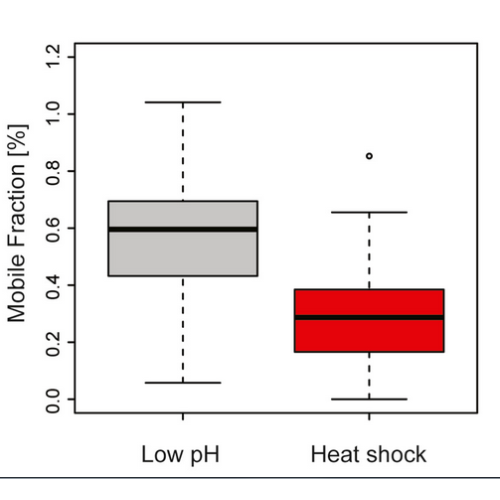Different Material States of Pub1 Condensates Define Distinct Modes of Stress Adaptation and Recovery.
How cells adapt to varying environmental conditions is largely unknown. Here, we show that, in budding yeast, the RNA-binding and stress granule protein Pub1 has an intrinsic property to form condensates upon starvation or heat stress and that condensate formation is associated with cell-cycle arrest. Release from arrest coincides with condensate dissolution, which takes minutes (starvation) or hours (heat shock). In vitro reconstitution reveals that the different dissolution rates of starvation- and heat-induced condensates are due to their different material properties: starvation-induced Pub1 condensates form by liquid-liquid demixing and subsequently convert into reversible gel-like particles; heat-induced condensates are more solid-like and require chaperones for disaggregation. Our data suggest that different physiological stresses, as well as stress durations and intensities, induce condensates with distinct physical properties and thereby define different modes of stress adaptation and rates of recovery.

- Cell Rep. 2018 Jun 12;23(11):3327-3339
- 2018
- Cell Biology
- 29898402
- PubMed
Enabled by:
